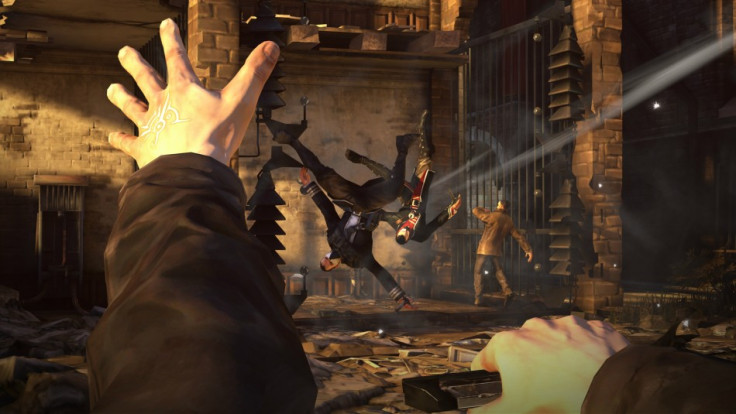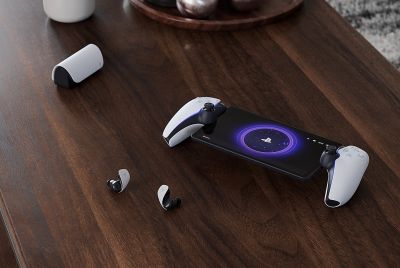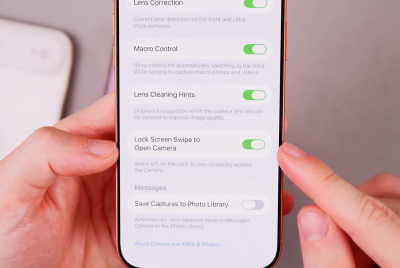Razer Edge Developer 'Not Seeing Innovation in the PC Space'
Razer CEO Min-Liang Tan discusses how the upcoming Edge tablet will change PC gaming.

PC users and console owners don't get on. Read the comments beneath a YouTube video of Battlefield 3, or any forum thread about The Last of Us, and you can watch PC gamers and console fans going at each other's necks over who has the better specs or line-up of exclusives.
For as long as PCs and consoles have existed, their respective players have been at odds with one another. The machines are so different. PCs are defined by strong modding communities, keyboards and mice, Steam and expensive hardware. Consoles, on the other hand, are far less open and only just coming around to digital distribution. They're much more competitively priced and with peripherals like the Kinect and the WiiMote, are consistently finding new ways for players to interact with games.
That presents the Edge, from Razer, with a difficult task. The so-called "most powerful tablet in the world", it hopes to unite PC and consoles - and their respective cheerleaders - by bundling together the control stick layout and living room convenience of a console with the Steam based line-up and modding community of a PC.
Featuring touch-based controls as well as a GeForce GTX graphics card, it's prepped to combine PC and console gaming into a single mobile device. Razer CEO Creative Director Min-Liang Tan believes the old divisions between consoles and PCs, and their cheerleaders, are fading:
"The lines between PC and console gaming are starting to blur in terms of utilities and user experience," he explained. "What was previously a logistical division between "in-home" console gaming and more multivariate "PC gaming" is crossing-over technologically and sub-culturally. With the Edge we want to compete with the top home console units today, and in doing that, there's every reason to believe that console gamers and PC gamers will cross-over in terms of their systems communities."
Old and new
Previously codenamed Project Fiona, the Edge was officially unveiled at CES 2013 in January. It weighs just under one kilogram, has a 10.1in screen and uses an i7 processor combined with 8GB of RAM, which has already been shown to run games like Dishonored at high specs with no frame rate troubles.
Where complex hardware configurations and high prices may have previously driven console users away from PC gaming, the Edge's top tier, closed-box specs and reasonably low, £600 price tag hope to entice them back in. And whereas PC gamers may have been put off consoles which don't support user-created mods, Liang Tan says the Edge can do anything a gaming desktop can:
"It's a full Windows 8 operating system, so users will be able to play PC games and run applications right out of the box and do anything, accommodate anything and download anything that a comparably equipped laptop or desktop could handle. It's a synthesis of everything that is relevant in gaming systems today. It's a touch-control tablet, a portable console-style system, a home console and a laptop. The best way to describe it is as an all-in-one PC gaming solution."

As a prospect, the Edge is an ostensible cross between old and new, console and PC. Its touch sensitive screen can be detached from the physical controls to play mobile games from the Windows Store like the Microsoft Surface, but at the same time, it supports the collective of modifications that have long made the PC space unique. It plays PC games as per your Alienware laptop, but it's also handheld and can hook up to your TV wirelessly to use Steam's Big Picture mode.
Central essence
By retaining the central essence of high-end graphics and user generated material, and combining it with touch-sensitive controls and mobility, Liang Tan and Razer are looking to innovate PC gaming. The PlayStation Move, Xbox Kinect and WiiMotes have all given console players new ways to interact with games; the Edge's touchscreen and portability make for a different kind of PC:
"Edge offers the functionality of a tablet for a PC gamer," explains Liang Tan. "It's a tablet with touch screen controls. It's a laptop with keyboard and mouse options. It's a mobile gaming console. It's a home gaming console. Packing the power of a mid-range gaming laptop into a tiny 2-pound tablet, and engineering modes for all use cases, is pretty amazing. Nobody else was going to do it, so we had to.

"The truth is, with respect to PC gaming, we're not seeing a tonne of," he continues. "Things look to be at a standstill on many fronts, especially in areas of development that demand progress. We're seeing a continued push for users to take their content, settings and games with them when they leave the house, and to have the greatest latitude possible with regard to connectivity. The mobile gaming space is growing, it's very social, and it is exploding worldwide.
"But more to the point, games are entertaining, competitive and are relatively ubiquitous, which makes the whole proposition of gaming aspirational in terms of skill, prestige and even reward. Games are in many cases "sports" in those terms, and they have massive fan bases of engaged people playing at all levels. The crossover of casual gaming to hardcore gaming is unfolding before our eyes, even while hardcore gaming is growing exponentially. The market is relatively flat-footed in this regard, which is why we developed the Edge."
Identity
While it still lacks a UK release date, with Liang Tan saying that "we don't have an exact global rollout timed," the Edge remains an intriguing prospect. PC and console gamers are notoriously parochial separated by the large borders set out by their very different machines. If Edge wants to unify those two markets, then it needs to be all things to all men - technically impressive, mod-friendly, easy to use and affordable.
And although it seems to be ticking those boxes, the videogame market, may not be set for an all-in-one device. The Wii U campaigned on its universal appeal, boasting PS3 level graphics, but also motion sensitive casual games and video streaming. And although the console is still in its infancy, critical response has been mixed toward it and Nintendo has slashed its yearly forecast after less than impressed third quarter sales.
The Edge might face a similar problem. As reflected in the split between Call of Duty and Battlefield, PS3 and Xbox, hardcore and casual and PC and console, people who play games like to have an identity. The Wii U caused financial trouble for itself by marketing to nobody in particular; Razer's Edge, appealing though it seems now, needs to make sure it doesn't do the same.
© Copyright IBTimes 2025. All rights reserved.






















